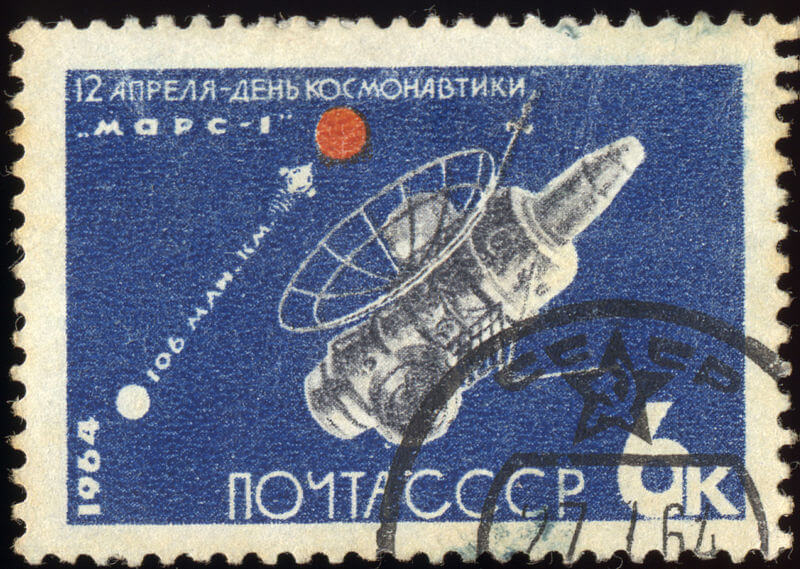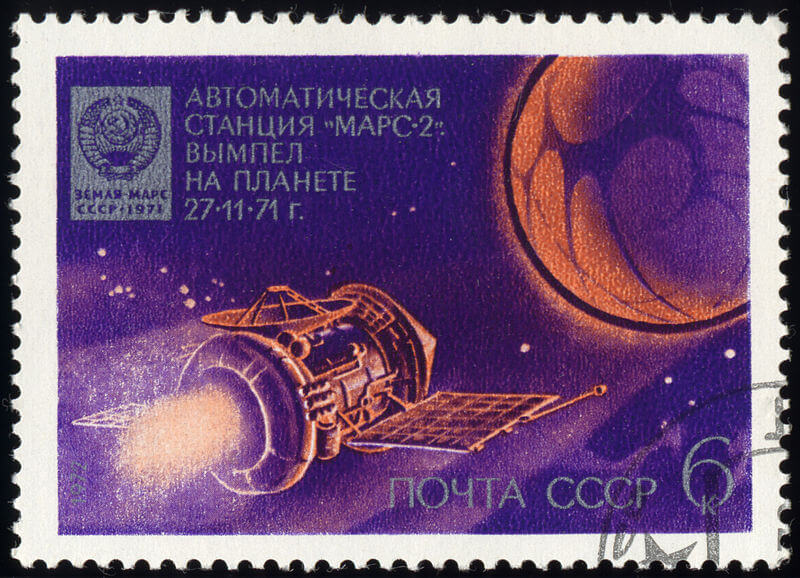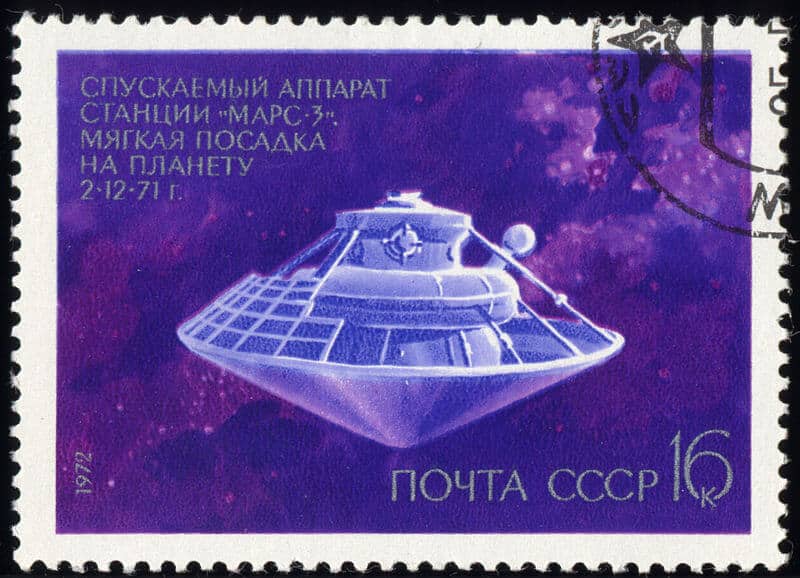The Russians launched 14 unmanned spacecraft to Mars between 1960 and 1973. In 1973 they raised their hands and took a very long time out. Note: The article was written in the 70s when the information that the Russians gave to the media was very little and the professional terminology was somewhat different from that used today.

introduction
Along with Russia's space program in the exploration of the moon, it tried its hand at the exploration of Mars. On the moon, the Russians had impressive successes such as returning soil samples from it and operating all-terrain vehicles. As for Mars, success was minimal for the Russians. The Russians launched 14 unmanned spacecraft to Mars between 1960 and 1973. In 1973 they raised their hands and took a very long time out. In this article, all the launches to Mars in this period will be described. In a rough division, two groups of launches must be distinguished, those that have been reported and those that have no official information. Some of the spacecraft are from the Mars series and some from the Zonde series.
March 1
The first in the series of Mars spacecraft was launched on November 1.11.1962, 1. It was the Mar-200,000 spacecraft. The spacecraft missed Mars by 21.3.1963 km. The mission failed due to loss of contact on March 106, XNUMX. It was a fault in the navigation system that caused the loss of contact. The spacecraft antenna could not be adjusted towards the Earth. This malfunction occurred when the spacecraft was at a distance of XNUMX million km from the earth. The goals of the flight were to achieve a. Video photographs and the exploration of Mars; establishing interstellar communication in space; Prolonged study of space.
Two days after the launch, the spacecraft was photographed by the astrophysical observatory in the Crimea. The weight of the spacecraft is 893.5 kg, its height is 3.25 meters and its diameter is 1.13 meters. With the retirement of the solar collectors, the diameter reaches 3.9 meters. The spacecraft has 2 parts. The first part is the orbital unit, which includes the main engine, navigation engines for orbit corrections, a cooler and the temperature control system (the temperature inside the spacecraft's body ranges between C0 30 - C0 20) and scientific instruments. In the second part - the telemetry unit - there are measuring instruments for the study of Mars. These devices come into action near Mars.
Spacecraft instruments:
- video camera.
- A spectrometer to detect signs of life on Mars.
- Spectrometer for detecting ozone in the atmosphere.
- A magnetometer for measuring the existence of a magnetic field around Mars and its strength.
- A device for measuring heat radiation of various kinds emitted from Mars and those coming from space.
- An instrument for measuring the composition of meteorites
- radio telescope
March 2

After 11 years, the activities of the Mar spaceships were resumed. On May 19.5.1971, 2, the Mars 4650 spacecraft was launched. The weight of the spacecraft is 470 kg. Upon launch, it was placed in a stationary earth orbit and from there set off on a journey in which it traveled over XNUMX million km. She had to land an instrument cell on the surface of Mars and perform a number of additional tasks.
- Discovery of life on Mars.
- Investigating the surface of Mars in 3 areas: 1. Geological survey 2. Mapping the terrain and measuring the 2 CO.
- Investigating the composition of the atmosphere, the weather and the winds blowing on the surface of Mars. The investigation is done in 3 areas:
- Measuring the density of the upper atmosphere including the existence of oxygen, hydrogen and argon in an atomic state, searching for water vapor and measuring their quantity, testing the reflectivity of light radiation from the atmosphere and the ground in the visible range of the spectrum. Determining the reflectivity of radio waves from Mars in the 3.4 micron range.
- Exploring the space around Mars.
- Interstellar space exploration during flight:
- Measuring the solar wind.
- Measurement of magnetic fields in interstellar space.
- The propagation of radio waves in interstellar space.
Spacecraft instruments:
- 2 video cameras - one with a wide shooting angle and one telescopic with a narrow angle of 40. The images are developed immediately and broadcast directly to Israel.
- 2 radiometers.
- 4 photometers.
- Magnetometer
- A device for measuring cosmic radiation.
- Infrared and ultraviolet spectrometers. The first device was designed to measure the thickness of the 2 CO concentration in the atmosphere. The second is designed to make a relief map of the surface can be done by measuring the height differences of the ground.
- Thermometers in the range of short waves for measuring heat sources including volcanic activity.
On June 17.6.1971, 27.7, a slight correction was made to the flight path. Until 81. 1 engagements with the spacecraft were carried out. Throughout the flight, the spacecraft transmitted data on radiation in close connection with measurements conducted simultaneously by the Lunkhod XNUMX lunar rover.
After 193 days of flight on 27.11 the spacecraft reached Mars and tried to land the instrument compartment on it, but the attempt failed. The parachute did not deploy (the Mars lander carried a pouch with a Russian flag nearby). After releasing the lander, the spacecraft entered an elongated elliptical orbit around Mars. The distances of the route from the ground were between 24,960 - 1376 km, the duration of the lap 18 hours and the angle of inclination 0 48.9. In December, the Phrygia was reduced by 150 km.
Spacecraft structure:
The height of the spacecraft is 3.6 meters. More than half the weight of the spacecraft is the fuel. The main fuel tanks protect the central cylindrical body - the body of the spacecraft. The directional dish antenna and 2 solar collectors are connected to it. A dough-like structure is attached to the bottom of the structure. Electronic systems and devices close perfectly to the engine.

March 3
Mars 3 was launched on May 28.5.1971, 2 to carry out the same missions as those of Mars 4650. The weight of the spacecraft is 8.6 kg. On 2 a slight correction was made to the flight path. The spacecraft took part in the observations also made by Mars 1 and Longhud XNUMX to measure radiation.
In addition to the instruments of the spacecraft identical to those of Mars 2, a French research instrument named Stereo 1 was placed in it. This instrument was designed to measure radio waves from the sun. With the help of measurements from space and coordinated terrestrial measurements, it is possible to obtain a three-dimensional image, albeit a partial one, of radio waves from the sun in space. The operation involved a large radio holograph in Nankai in France, a spectrograph to identify different types of radiation, a small radio telescope (600 grams), mounted on top of the spacecraft's solar collector, and two small receivers that amplify the radio signals from the telescope: one is in the spacecraft and the other in Nankai. The data coming from the spacecraft is transmitted in a code that is received and decoded in Moscow and from there is transmitted to France for comparison with the data received in Nankai.
After 198 days of flight, on 2.12 Mars 3 arrived at Mars, landed the instrument compartment on it and entered orbit around it. Its distance from the ground was 192,000 - 1488 km. The duration of the coffee is 11 days and the angle of inclination is 0 49.9. The interceptor rockets were useless on this landing. The cell equipment greatly increased the weight of the cell. The spaceship that carried him had no room for this extra weight.
The landing was carried out while penetrating the atmosphere whose density is 1% that of the Earth at a speed of 24,000 km/h. The tenuous atmosphere of Mars caused a certain slowdown in landing speed. After a while the landing parachutes began to open. The sophisticated use of gunpowder allowed quick and efficient opening of the parachutes even at such a high speed of the lander. The main chute opened in two stages, thus preventing sudden braking. The second stage began when the speed of the cell was less than the speed of sound. At a height of 20 meters the altimeter (operating via radio waves) activated a special motor to assist the landing. Another engine moved the parachute away at the same time. In this way, the researchers wanted to ensure the stability of the cell when winds suddenly erupt.
Immediately after landing, the cell began transmitting TV signals, but 20 seconds later they suddenly went silent. A fault with the mother spacecraft's relay antenna and the weather thwarted the lander's mission. At that time, the wind speed on Mars was 480 km/h, a speed that the lander could not withstand. The broadcast did not include details about the landscape of Mars. The landing place was the area of Las W 0 158 – S 0 45.5. The photography technique is similar to those of the American Mariner spacecraft that were launched towards Mars. The captured image is broken down into lines with each line broken down into points. This data is captured by computers in the control center and retranslated into images.
The structure of the landing gear
The shape of the landing gear is like a sphere, located inside an annular body with the engine nozzle protruding from it. This structure includes the parachute system. The heat shield allows for maximum aerodynamic braking when the spacecraft enters the Martian atmosphere.
landing gear instruments
The chamber includes instruments for measuring atmospheric pressure and temperature, mass spectrometers for analyzing the chemical composition of the atmosphere, special facilities for measuring the wind, for determining the chemical composition and physical properties of the Martian surface. There are also 2 video cameras on the landing gear and they can take landscape photos at an angle of 0 360.
End of mission
Mars 3 transmitted data for 3 months. At the beginning of September 1972 it was announced that March 2 and March 3 had finished their duties.
Informative coordination between the USA and Russia (then the USSR)
After the launch of March 2 and March 3, the American spacecraft Mariner 9 was launched towards Mars. Because Mariner 9's flight path was different from that of the Russian spacecraft, it reached Mars before them. According to an agreement between the two countries, it was decided to exchange information between them regarding what will be discovered by their spaceships. The Russian space scientists received regular information about the weather prevailing on the surface of Mars in preparation for the landing of their spacecraft.
March 4 - March 7
On July 21.7.1973, 4, Russia began a very complex operation to explore Mars. During this operation, 4 spacecraft were launched towards the planet. Two of the Mars 5 and Mars 6 spacecraft must enter orbit around Mars. March 7 and March 4 should land on it. Mars 5 and Mars 460 should serve as liaison between the landers and the Earth. The distance that the spaceships have to travel during a mission is XNUMX million km. The objectives of the operation are:
- The exploration of Mars from the orbit and the mapping of the ground.
- Defining the physical properties of the soil, the composition of the rocks and defining their shape.
- check the possibilities of taking video photos at the landing sites and their surroundings.
- Detecting signs of life.
- Measuring radiation and magnetism in space during the flight to Mars, solar radiation and cosmic radiation.
The structure of the spacecraft - March 6 and March 7 differ in their structure from March 4 and March 5.
The landing method - the spacecraft reaches Mars at a speed of 5.7 km/s. The low pressure of the Martian atmosphere results in a slower speed of the spacecraft over a greater distance than in a more compressed atmosphere. Therefore the spacecraft enters the atmosphere at a narrow angle, so the distance it travels is smaller. The lander separated from the spacecraft at a distance of 65,000 km from Mars. At the beginning of its journey, the lander is slowed down by a braking engine that moves it to a landing track. A small engine deploys a small parachute and then a large parachute. The retirement of the parachutes is not the end of the story. The cone-shaped heat shield comes into action in its second role as an aerodynamic speed damper.
March 4
The spacecraft was launched on July 21.7.1973, 193.6. The launch is made from a parking track that is far from the ground of the earth. 155.2 – 87.94 km. Lap time 0 minutes and angle of inclination 51.52 10.2.1974 Close to the time when it was supposed to enter orbit around Mars on 22,000, a malfunction occurred in the spacecraft's braking engine, it did not ignite and the spacecraft missed Mars. It passed at a distance of XNUMX km from it, a distance that made it possible to take and broadcast a number of unspecified images of Mars. The spacecraft entered a solar orbit and continued to explore interstellar space.
March 5
The spacecraft was launched on July 25.7.1973, 187.2. The launch was made from a parking track that is 152 - 87.86 km from the Earth's surface. Lap time 0 minutes and inclination angle 51.53 12.2.1974. On February 31,500, 176, the spacecraft entered orbit around Mars, which is 25 - 1973 km from the ground and the duration of the orbit is XNUMX hours. The third stage of the flight was carried out by the astronomical navigation system. At the beginning of September XNUMX it was announced that the spacecraft's telemetry malfunction had been studied.
March 6
The spacecraft was launched on August 5.8.1973, 192. The launch was made from a parking track whose distance from the earth's surface is 153.6 - 0 km, inclination angle 51.54 87.92 and lap time 12.3.1974 minutes. on 10.3. The landing compartment was detached from the spacecraft that day. Much benefit was not produced from the lander since contact with it was cut off shortly after landing. The lander had time to transmit data on the temperature and the atmosphere to Israel. It started broadcasting on 148 and stopped XNUMX seconds after the parachutes retired near the ground.
The instruments of the spacecraft-
1. Video camera.
2. Instruments for testing the soil.
3. French instruments
A. Stereo V for the study of the sun, measuring radio rays emitted by the sun, its plasma, the solar wind and cosmic rays, and two instruments designed for the study of Mars, its environment and the space of the solar system: . T Gemeaux and S Gemeaux.
March 7
The spacecraft was launched on August 9.8.1973, 152. The launch was made from a parking orbit whose distance from the ground of the earth is 192-0 km. Angle of inclination 51.51 87.91 and lap time 6 minutes. Like Mars 9.3.1974, it was also equipped with a French instrument for studying the sun. Approaching Mars on March 13,000, XNUMX, the spacecraft released a compartment for landing that day. Malfunctions in the lander's instruments resulted in the decontamination of Mars by XNUMX km.
Probe 2
The second spacecraft in the Zonde series - Zonde 2 was launched to Mars. The launch was on November 30.11.1964, 50. On the day of the launch, there was concern that the operation would fail. The supply of energy for the proper operation of the spacecraft instruments reached only XNUMX% of the planned supply. After a while the problem was fixed.
The weight of the spacecraft is 950 kg and it was equipped with an ion engine with a diameter of several centimeters. She was supposed to reach Mars on August 2.8.1965, 2.5.1965. On May 1600, XNUMX, contact with the spacecraft was lost, and it passed XNUMX km away from it. After that it entered a solar orbit.
Launches not officially announced
1. 10.10.1960
2. 14.10.1960 the two spaceships failed to enter a national parking orbit.
3. Sputnik 22 - launched on October 24.10.1962, 893.5. Weight 252 kg, national parking route whose distance from the ground is 115-0 km. Inclination angle 64 XNUMX The final stage and the missile exploded as it accelerated towards de-orbit.
4. Sputnik 24 - launched on 4.12.1962, parking orbit 590 - 196 km, inclination angle 0 64 The spacecraft exploded when it tried to free itself from the force of gravity.
5. Probe 3 - launched - on 18.7.1965. Passed by the moon and continued towards Mars. Weight 950 kg. and as part of which an engine test was conducted in preparation for entering orbit around Mars.
6. Cosmos 419 - launched on 11.5.1971 to a national parking orbit whose distance from the ground is 167-153 km, inclination angle 0 51.53. It circled the earth once in 84.47 minutes. The spacecraft failed to release from the fourth stage of the Proton launch vehicle.
